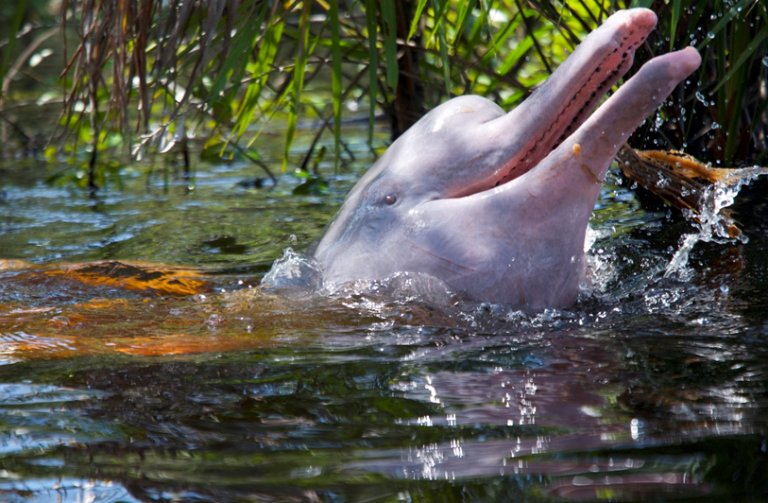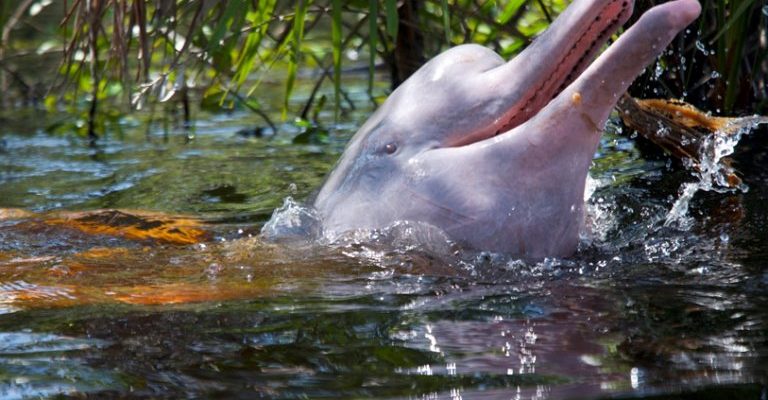
Let’s take a moment to explore the beautiful but sometimes misunderstood world of the Amazon River Dolphin. As we uncover these myths, you might find that the tales told about the boto are as colorful as the vibrant waters it swims in. From being a symbol of love and fertility to being seen as a trickster, the perceptions of these dolphins vary widely across different cultures in the Amazon. So, grab your favorite drink, and let’s embark on this journey together!
The Amazon River Dolphin: A Brief Overview
The Amazon River Dolphin is unique not just because of its color, but also its behavior and habitat. Unlike their oceanic cousins, botos are freshwater dolphins, typically found in the rivers, lakes, and flooded forests of the Amazon Basin. Their skin can range from gray to a soft pink, especially as they age, which adds to their charm. These dolphins are known for their intelligence and playfulness, often seen leaping and twisting through the water.
These creatures play a crucial role in their ecosystem. They help maintain the health of river systems by keeping fish populations in check, ensuring a balanced environment. Unfortunately, their habitat is threatened by pollution, fishing, and human encroachment. This makes understanding the cultural beliefs around them all the more important—they serve as a reminder of our connection to nature and the need to protect it.
Myths and Legends of the Boto
Many myths surround the Amazon River Dolphin, and these stories often reflect the beliefs and values of the local communities. One of the most famous tales is that the boto transforms into a handsome man during the night. He’s said to charm young women, often leading them to his underwater home. Some believe that this enchanting dolphin-man can whisk them away to a magical world beneath the river.
These myths serve various purposes. They can act as warnings or moral lessons, teaching young people about the dangers of the world—or they can simply be a fun way to explain the mysterious behavior of these dolphins. People often weave these stories into their daily lives, showcasing the deep connection between the river, its inhabitants, and the cultures that thrive alongside it.
The Boto as a Symbol of Fertility
In some cultures, the Amazon River Dolphin is revered as a symbol of fertility and love. This belief may stem from the dolphin’s playful nature and its relationship with the water, which is often associated with life, growth, and renewal. For many indigenous tribes, the boto is more than just a creature of the river; it represents a link between the human and spiritual worlds.
People might hold rituals or ceremonies to honor the boto, especially during times of fertility or harvest. Some even believe that the dolphin can bless couples with children or ensure bountiful fishing seasons. It’s a beautiful example of how nature and spirituality intertwine in the lives of those who live along the river.
Cultural Significance in Folklore and Rituals
Beyond fertility, the Amazon River Dolphin features prominently in various folk tales and rituals. These stories vary from one community to another, but they generally highlight the dolphin as a protector or guide. In some beliefs, the boto is seen as a guardian spirit of the river, watching over both its inhabitants and the people who depend on its resources.
In times of trouble, people might turn to the dolphin for guidance, believing that it can lead them towards fortune or safety. Rituals may involve offerings or prayers thrown into the water, calling upon the boto’s wisdom. Such practices emphasize the respect and reverence local cultures have for their environment and the creatures within it.
The Boto as a Trickster Figure
Ironically, while the boto is often viewed positively, it also embodies the role of the trickster in various legends. Similar to other trickster figures in mythology, the boto can be mischievous, playing jokes on fishermen or leading boats astray. This adds a layer of complexity to the dolphin’s character, making it both a beloved and feared creature.
These stories often serve to remind people of the unpredictability of nature, reinforcing the idea that while the river can be a source of life, it can also be dangerous. The trickster aspect of the boto teaches valuable lessons about humility and caution in the face of natural forces.
Conservation and Cultural Awareness
With the world rapidly changing, the cultural beliefs surrounding the Amazon River Dolphin are at risk. As deforestation, pollution, and climate change threaten the Amazon ecosystem, the future of the boto is uncertain. Preserving these myths is crucial, as they foster a sense of respect for the environment and highlight the interconnectedness of life in the river.
Conservation efforts must not only focus on the dolphins themselves but also on educating local communities about their importance. By weaving cultural significance into these efforts, we can help protect both the Amazon River Dolphin and the rich tapestry of stories that surround it. This approach encourages a sustainable coexistence, ensuring that future generations can continue to enjoy both the creature and the myths that define it.
The myths and cultural beliefs surrounding the Amazon River Dolphin offer a window into the spirit of the Amazon and the relationship between its people and nature. Each story, whether it presents the boto as a charming lover, a guardian, or a trickster, reveals the deep respect and fascination communities hold for this unique creature.
Understanding these narratives not only enriches our appreciation for the boto but also highlights the urgent need for conservation. By honoring the myths and the realities of the Amazon River Dolphin, we can forge a path toward a sustainable future, keeping this enchanting creature in the hearts and waters of the Amazon for generations to come.

